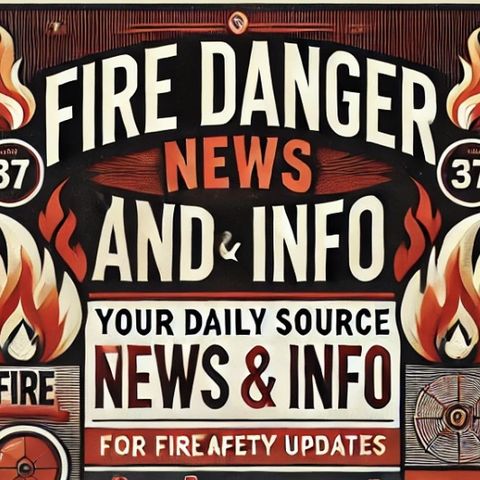Mastering Wildfire Science: USGS Leads the Charge in Mitigating Devastating Blazes

Download and listen anywhere
Download your favorite episodes and enjoy them, wherever you are! Sign up or log in now to access offline listening.
Mastering Wildfire Science: USGS Leads the Charge in Mitigating Devastating Blazes
This is an automatically generated transcript. Please note that complete accuracy is not guaranteed.
Description
Wildfires have become a formidable adversary in the western United States, exacerbating environmental and community challenges. To combat this threat, the integration of fire science knowledge is essential. The United...
show moreWildland fires can devastate expansive areas, affecting ecosystems, wildlife, and human settlements. In recent years, the intensity and frequency of these fires have escalated due to climate change, prolonged droughts, and increased human activity near wildlands. As a result, the role of USGS in understanding and managing wildfires has never been more critical.
One of the primary focuses of USGS fire science is predicting fire behavior. Through sophisticated modeling and historical analysis, researchers can forecast potential fire paths and intensities. This predictive capability aids in developing more effective firefighting strategies and evacuation plans, ultimately protecting lives and property.
Moreover, USGS scientists conduct extensive studies on the ecological effects of fires. While wildfires can be destructive, they also play a natural role in maintaining healthy ecosystems by clearing underbrush, promoting new growth, and recycling nutrients. USGS research aims to distinguish between beneficial and harmful fires, providing insights into post-fire recovery processes and guiding land management practices.
The USGS also emphasizes the importance of collaboration in wildfire science. By partnering with agencies such as the National Park Service, the Bureau of Land Management, and local fire departments, USGS facilitates a unified approach to wildfire management. This cooperation extends to public education, ensuring communities are well-informed about fire risks and safety measures.
Technology innovation is a cornerstone of USGS efforts. Remote sensing, satellite imagery, and Geographic Information System (GIS) mapping provide real-time data, enabling swift responses to emerging fire threats. Additionally, these technological tools assist in long-term research projects that track changes in fire patterns and their relation to environmental shifts.
To further understand the impacts of climate change on wildfires, USGS is exploring the role of various climatic elements, such as temperature fluctuations, precipitation patterns, and wind dynamics. This research is crucial for adapting fire management techniques to evolving environmental conditions and for predicting future fire seasons more accurately.
Furthermore, the USGS Wildland Fire Science webpage serves as a vital resource for both professionals and the public. It offers insights into ongoing research, published studies, and educational materials on wildfire science. By increasing accessibility to this information, the USGS empowers individuals and communities to engage actively in fire prevention and safety initiatives.
In conclusion, the work being conducted by USGS fire scientists is instrumental in enhancing our understanding of wildfires and improving management tactics. By harnessing fire science, the USGS is making significant strides in protecting ecosystems, safeguarding communities, and preserving natural resources from the ravaging effects of wildfires. To explore more about their pivotal contributions, visit the USGS Wildland Fire Science webpage and discover how informed science is making a tangible difference in addressing one of the most pressing environmental challenges of our time.
Information
| Author | QP-4 |
| Organization | William Corbin |
| Website | - |
| Tags |
Copyright 2024 - Spreaker Inc. an iHeartMedia Company

Comments